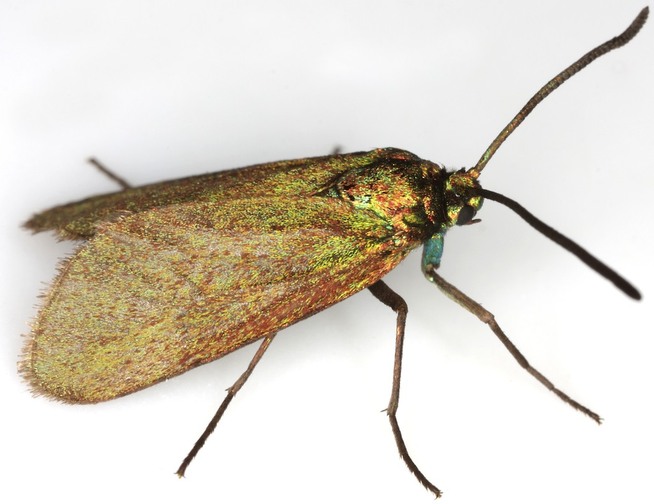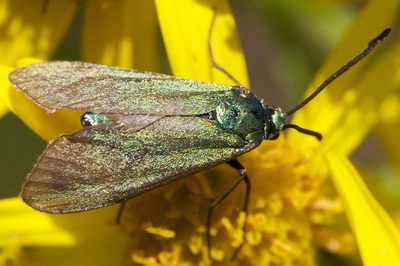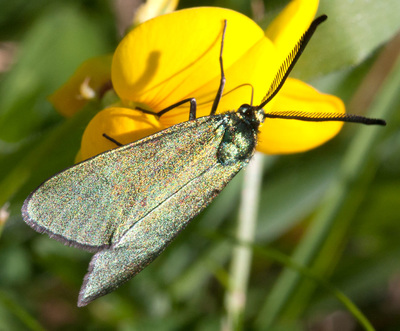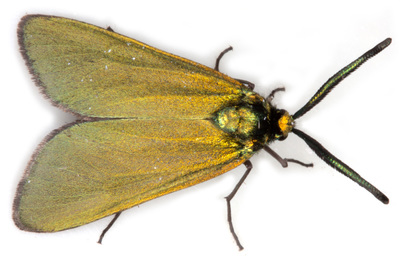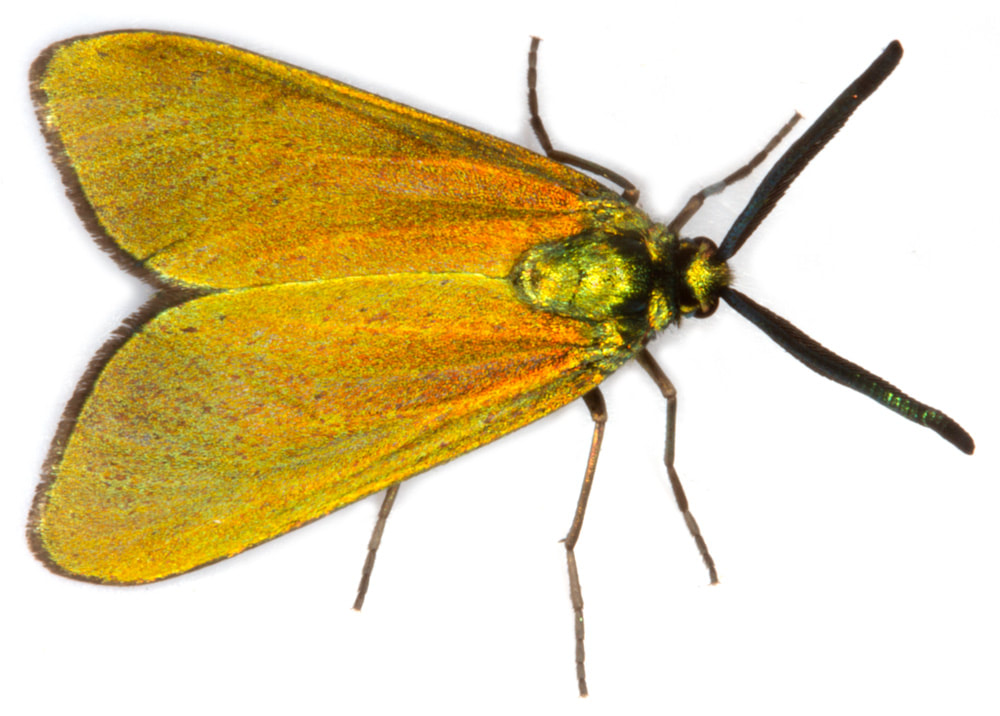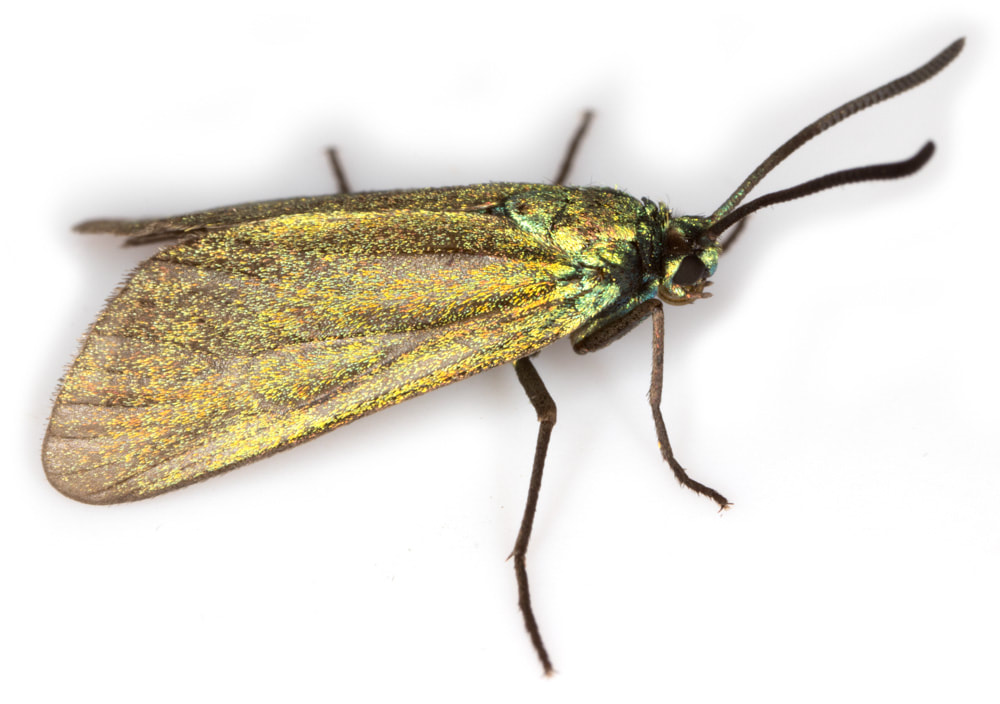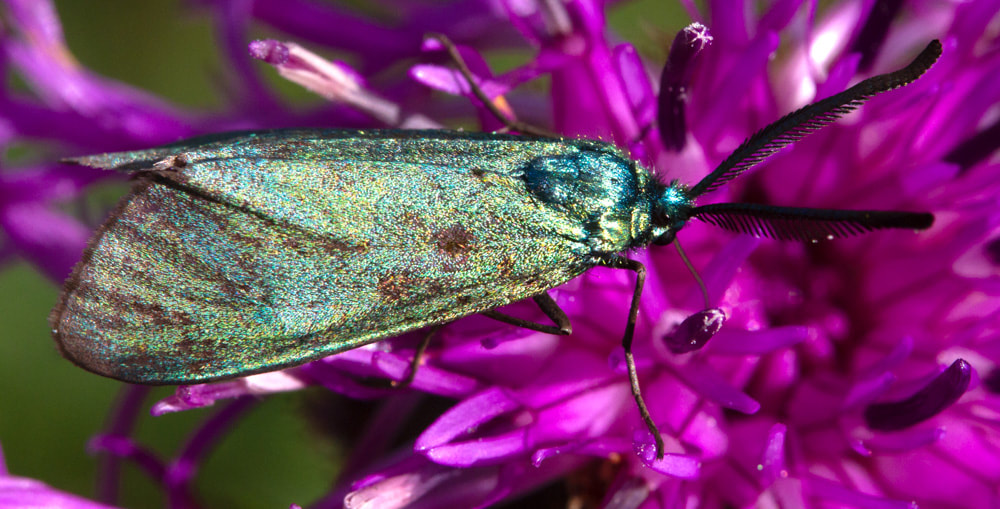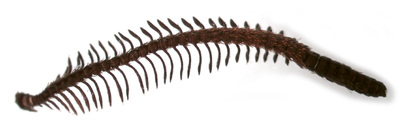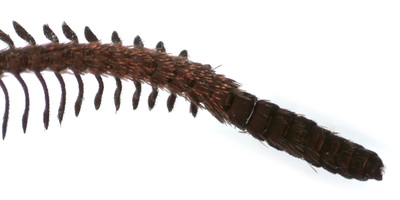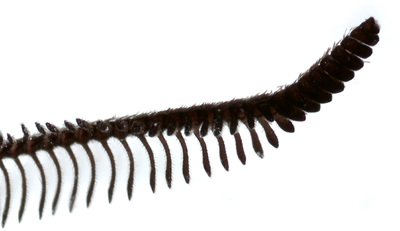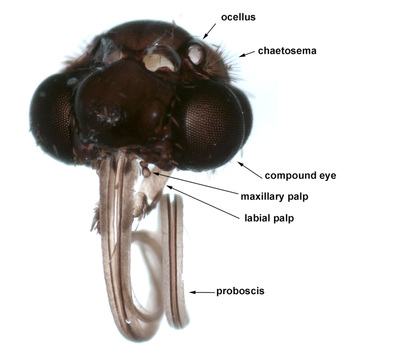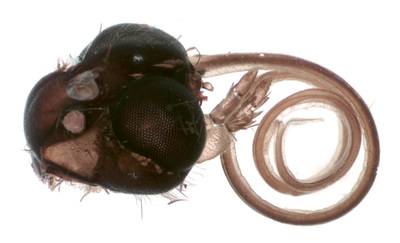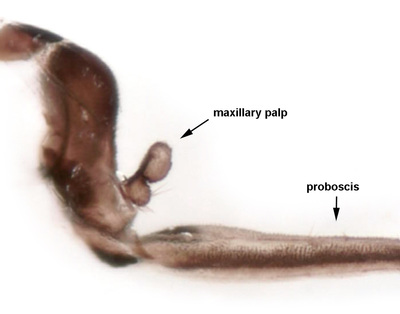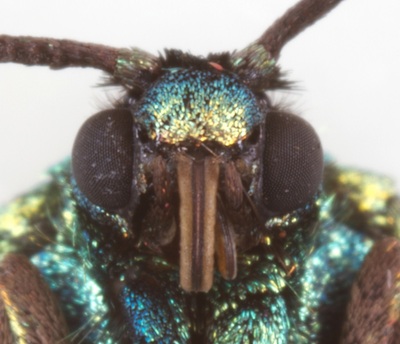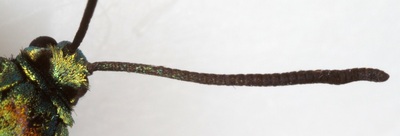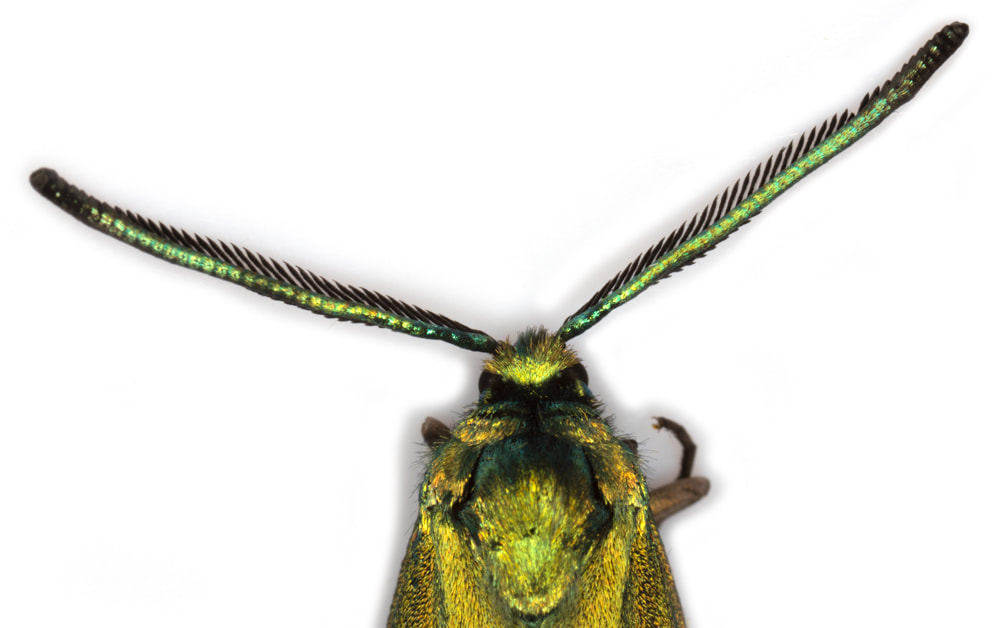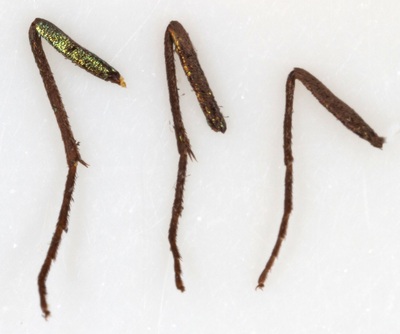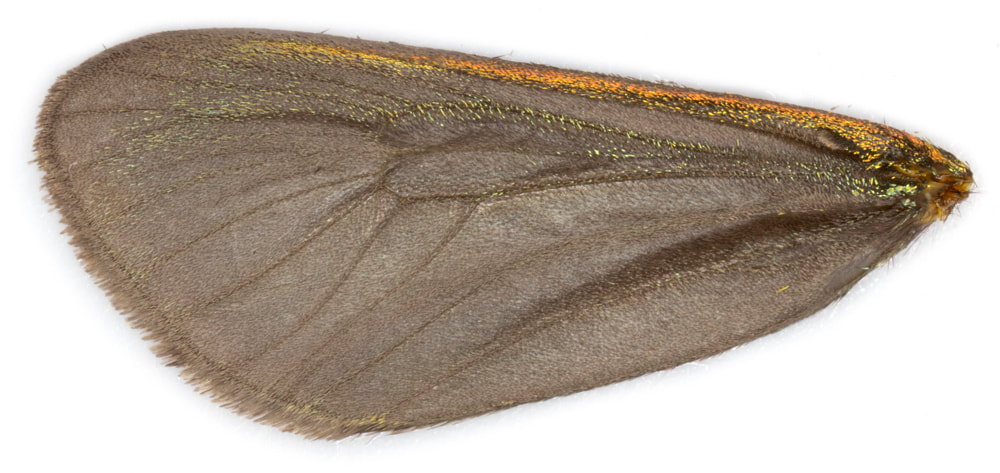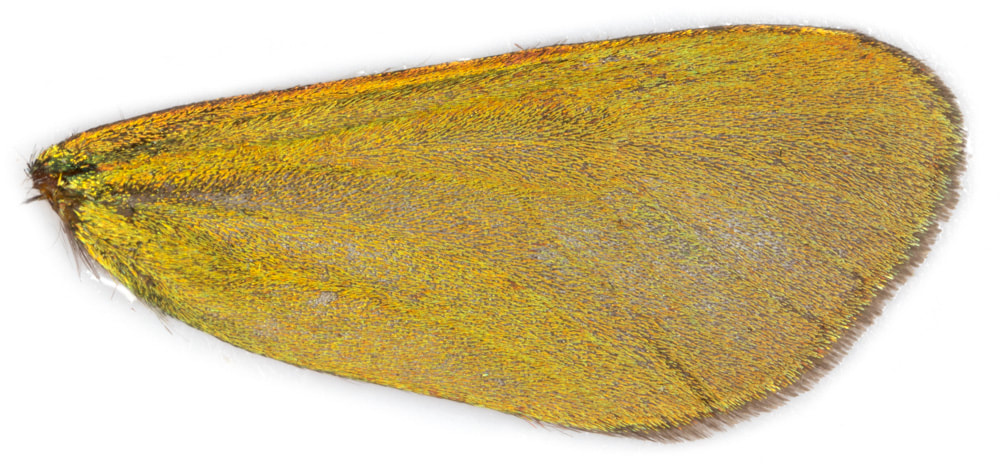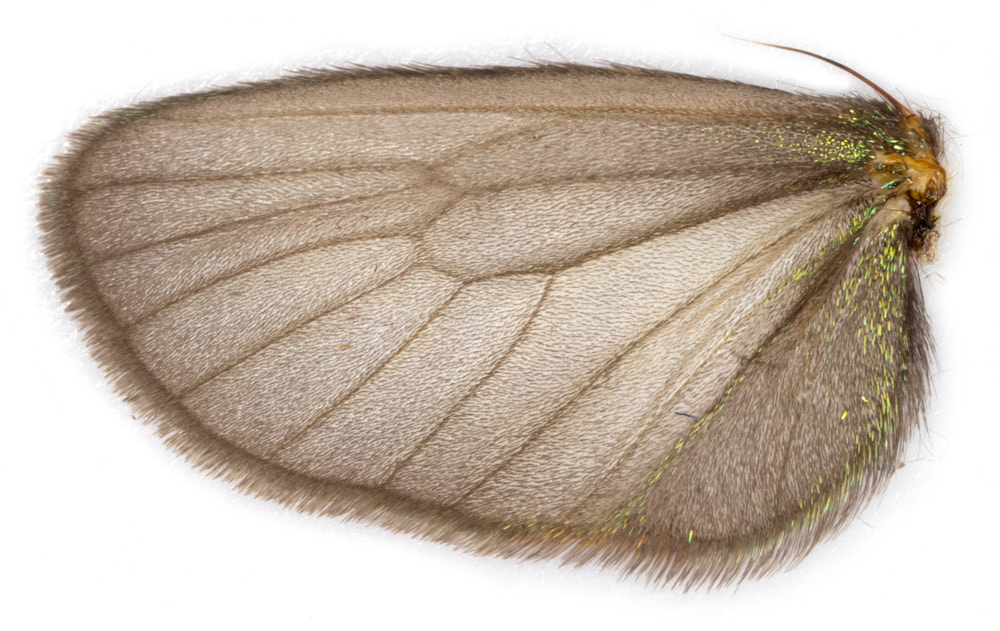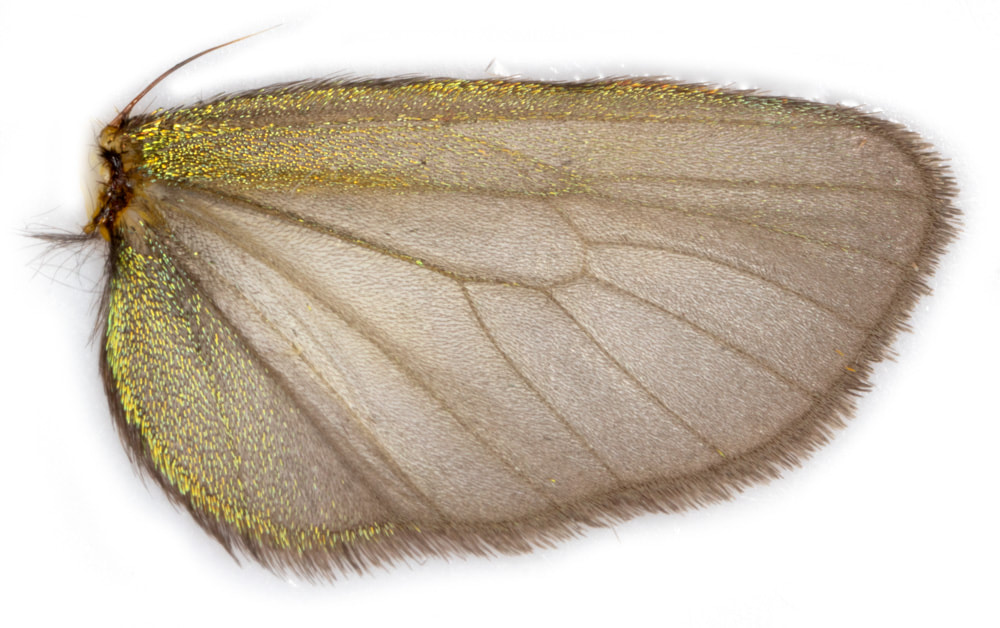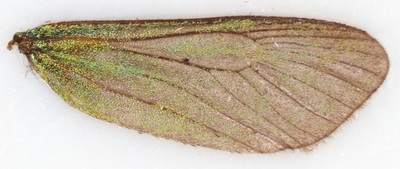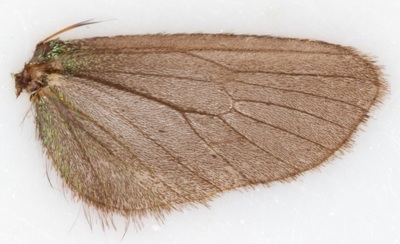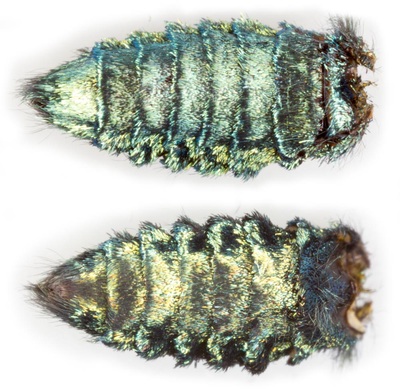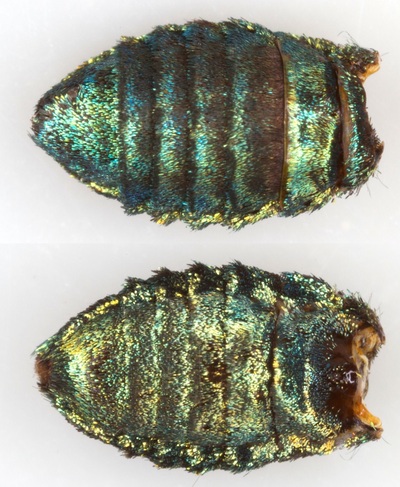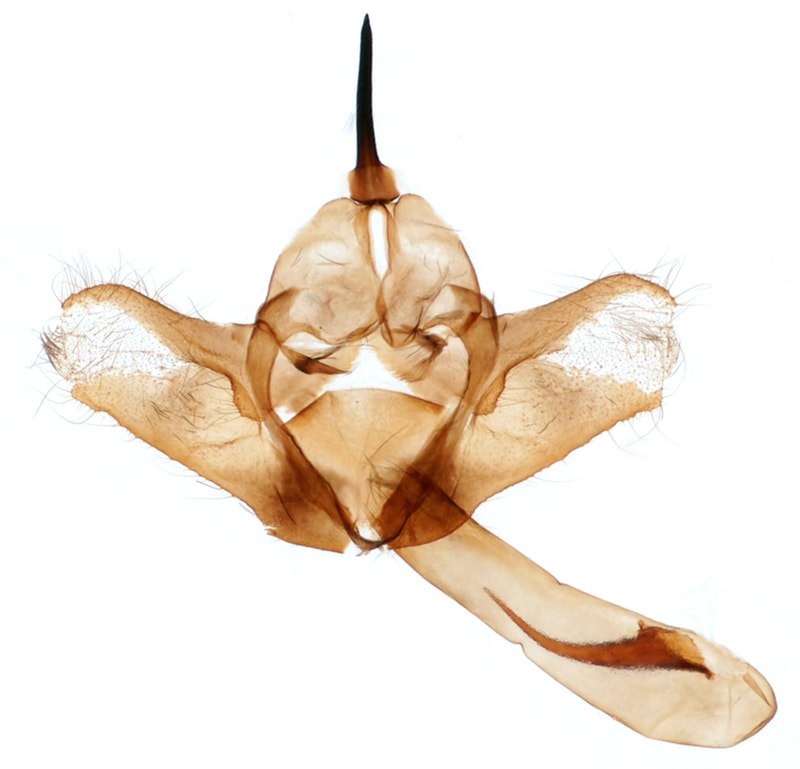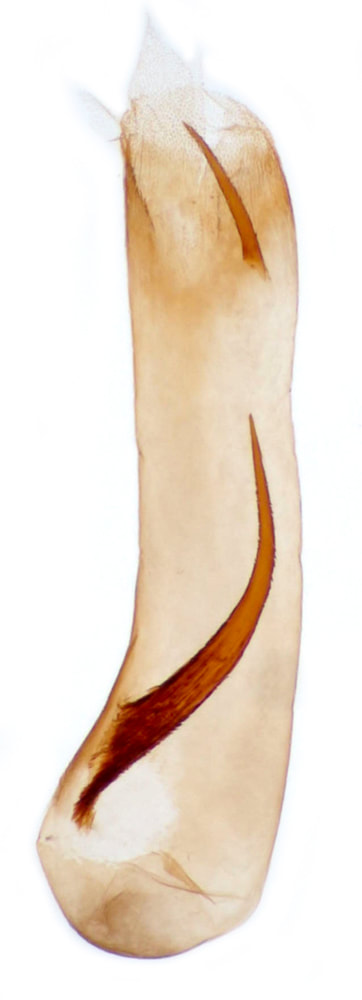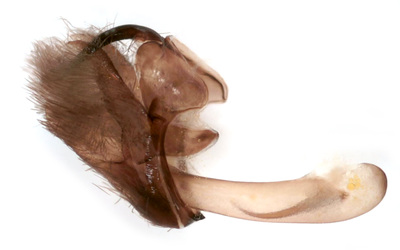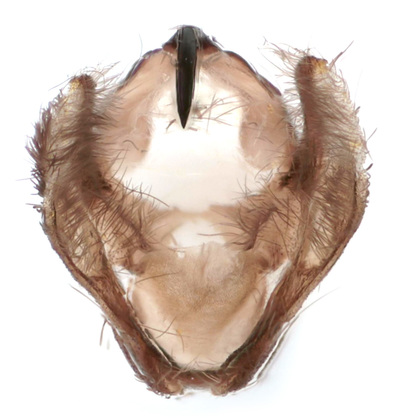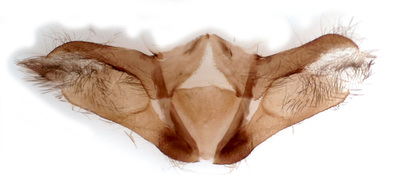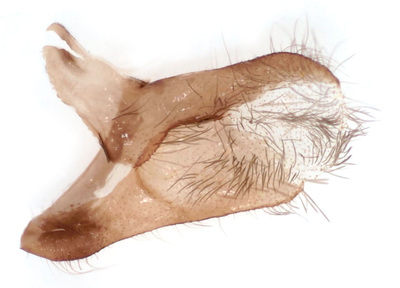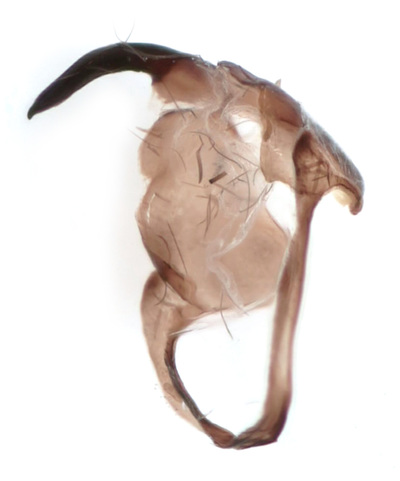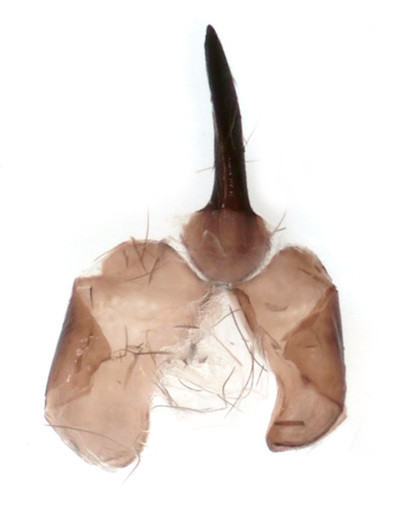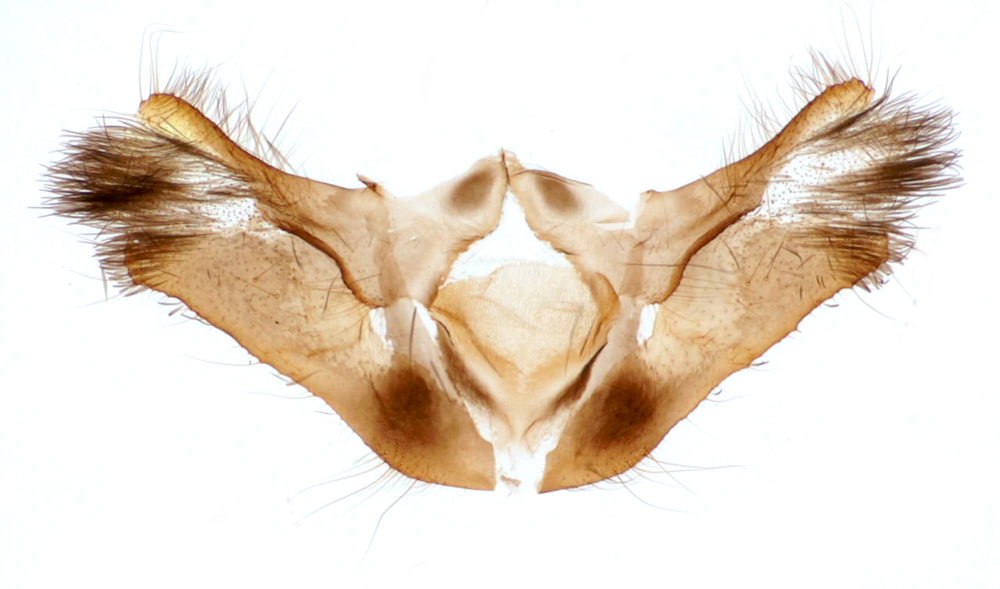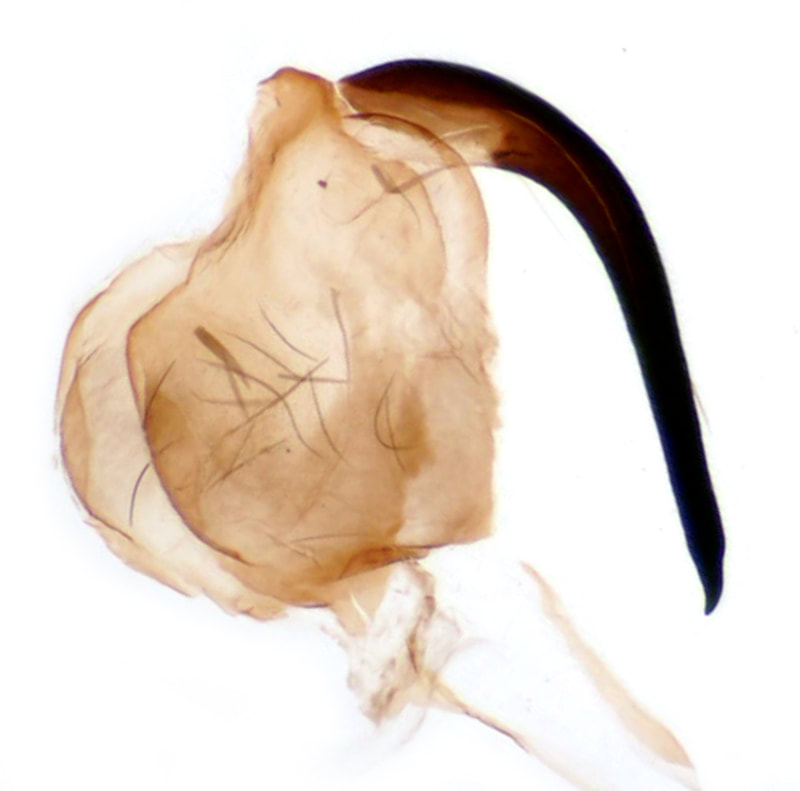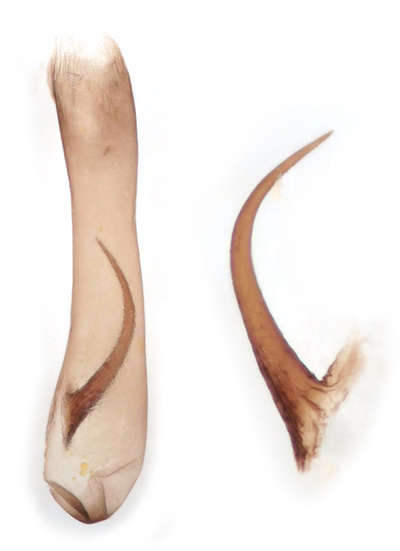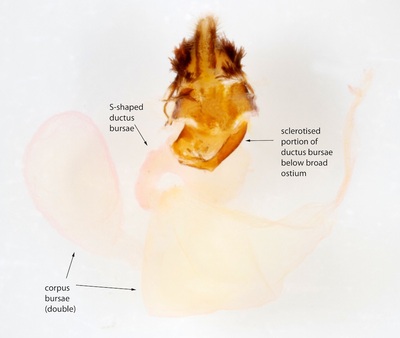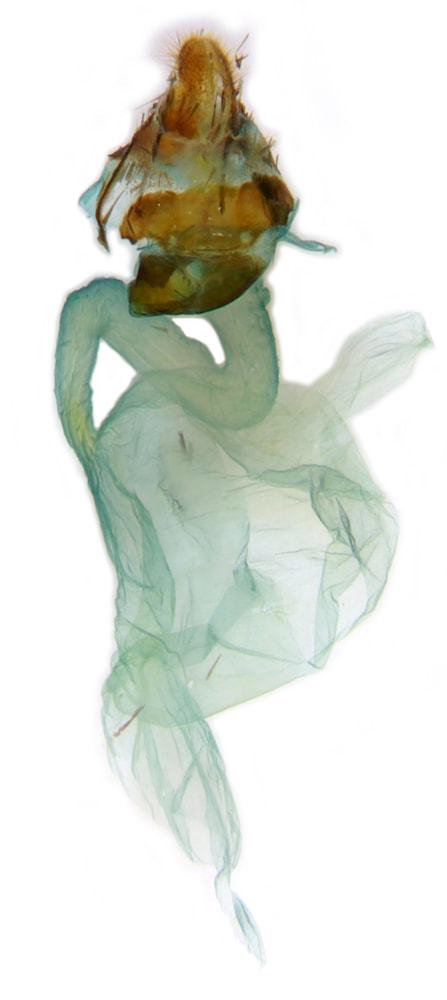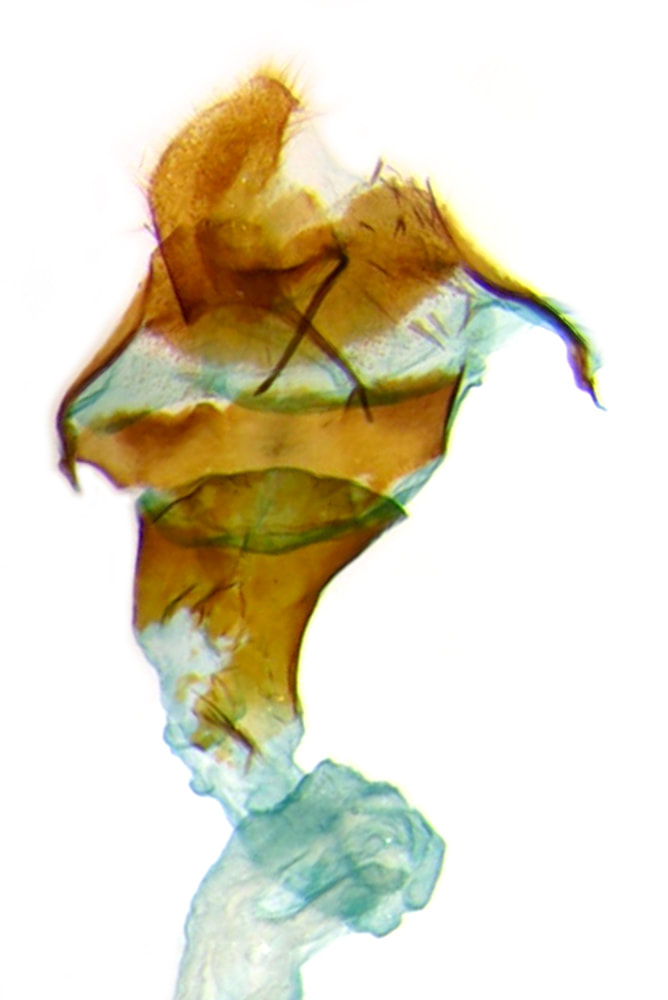54.002 Adscita statices (Forester)
ws: m25-31mm, f22-25mm, fw: m12-15mm, f11-13mm; May-Jul; common sorrel (Rumex acetosa); local in England and Wales
ID: The 3 Forester species are very similar. A.statices is the only one found in Norfolk (§1&2).
A.geryon (Cistus Forester) is smaller (ws: m19-25mm, f18-22mm, fw: m10-12mm f 9-10mm) but otherwise externally identical.
Jordanita globulariae (Scarce Forester) differs in antennal detail: in male A.statices the apex is thickened and obtuse and the apical 9-11 segments lack pectinations; in male J.globulariae the apex is tapered and pointed and only the apical 3 segments lack pectinations. In female A.statices the antenna is gradually thickened towards the apex and narrowed towards the base; in female J.globulariae the antenna is of uniform thickness.
§3 is smaller than the quoted range for A.statices (fw 10.4mm) but ID is confirmed by genital dissection.
Female genitalia: ostium broad; ductus bursae S-shaped, heavily sclerotised only below (anterior to) ostium; corpus bursae double. In A.geryon the ductus bursae is sclerotised for much of its length; in J.globulariae the ostium is circular and strongly sclerotised and the ductus bursae short and weakly sclerotised.
A.geryon (Cistus Forester) is smaller (ws: m19-25mm, f18-22mm, fw: m10-12mm f 9-10mm) but otherwise externally identical.
Jordanita globulariae (Scarce Forester) differs in antennal detail: in male A.statices the apex is thickened and obtuse and the apical 9-11 segments lack pectinations; in male J.globulariae the apex is tapered and pointed and only the apical 3 segments lack pectinations. In female A.statices the antenna is gradually thickened towards the apex and narrowed towards the base; in female J.globulariae the antenna is of uniform thickness.
§3 is smaller than the quoted range for A.statices (fw 10.4mm) but ID is confirmed by genital dissection.
Female genitalia: ostium broad; ductus bursae S-shaped, heavily sclerotised only below (anterior to) ostium; corpus bursae double. In A.geryon the ductus bursae is sclerotised for much of its length; in J.globulariae the ostium is circular and strongly sclerotised and the ductus bursae short and weakly sclerotised.
§1 Winterton, Norfolk; 22/07/2008; female; fw 11mm
§2 Removed
§3 Sandwich Bay, Kent; 14/07/2014; female; fw 10.4mm
§4 Lankham Bottom, Dorset; 19/06/2015; male; fw 14.2mm; potted by day
§5 Cranwich camp, Norfolk; 05/07/2018; female; fw 9.9mm
§6 Lewes Down, East Suffolk; 13/06/2020; male
§7 Lewes Down, East Suffolk; 13/06/2020; male; fw 13.1mm
§8 Lewes Down, East Suffolk; 13/06/2020; male; fw 13.0mm
All images © Chris Lewis
§2 Removed
§3 Sandwich Bay, Kent; 14/07/2014; female; fw 10.4mm
§4 Lankham Bottom, Dorset; 19/06/2015; male; fw 14.2mm; potted by day
§5 Cranwich camp, Norfolk; 05/07/2018; female; fw 9.9mm
§6 Lewes Down, East Suffolk; 13/06/2020; male
§7 Lewes Down, East Suffolk; 13/06/2020; male; fw 13.1mm
§8 Lewes Down, East Suffolk; 13/06/2020; male; fw 13.0mm
All images © Chris Lewis
Page published 16/04/2012 (§1-2) | §3 added and text amended 22/07/2014 | §4 added 03/03/2016 | §5 added 29/04/2019 |
§6-8 added 27/06/2020
§6-8 added 27/06/2020
